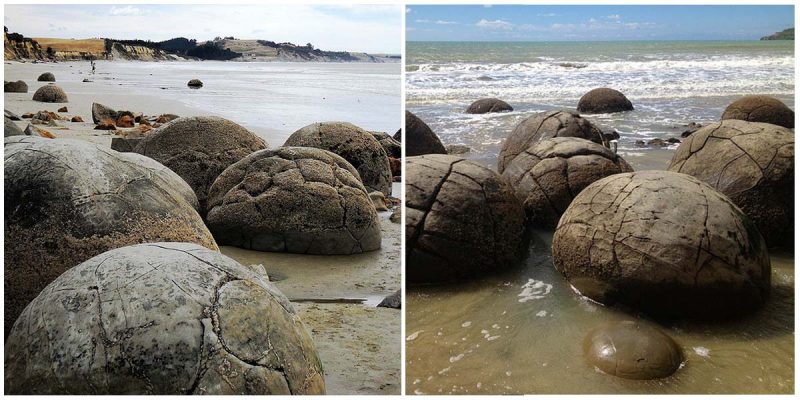The Moeraki Boulders are unusually large and spherical boulders on Koekohe Beach near Moeraki on New Zealand’s Otago coast. They originally formed on the sea floor when the mudstone was accumulating during the early Tertiary period, some 60 million years ago. The relentless pounding of waves over millennia has gradually eroded the softer sediment and uncovered the compacted spherical stones.
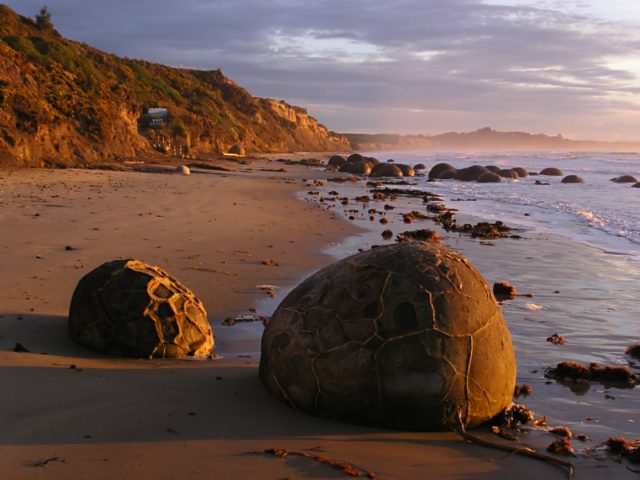
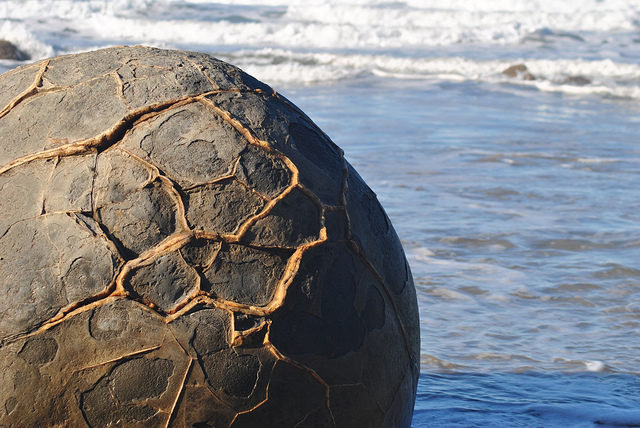
These boulders are grey-colored septarian concretion, a sedimentary rock that has had the space between its individual grains filled up by minerals which acted like cement. The degree of cementation varies from being relatively weak in the interior of a boulder to quite hard at its outside rim.
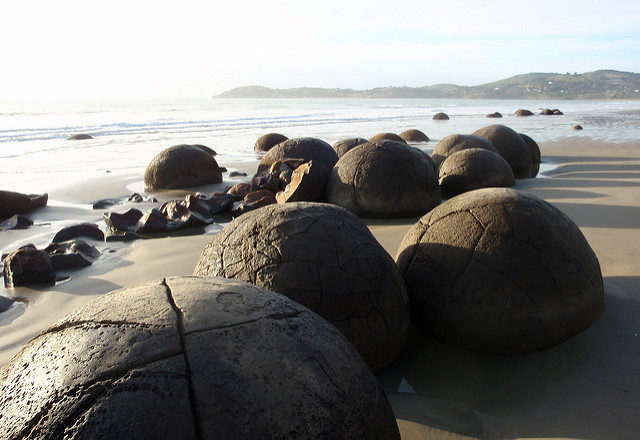
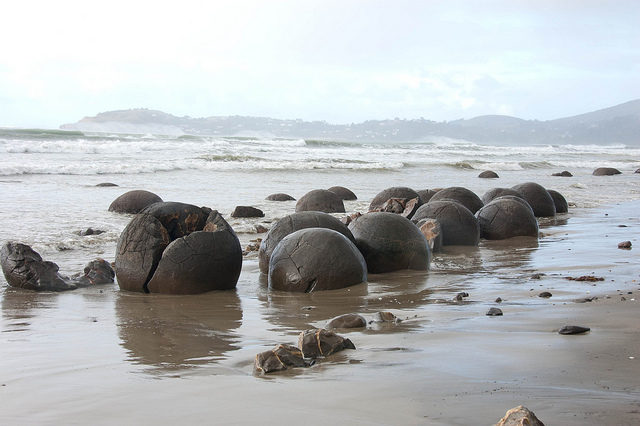
What is significant about these concretions is their size. Some of the boulders measure two meters in diameter and most of them are almost perfect spheres. Scattered all over the beach, they can be seen as clusters or isolated on certain spots. It is estimated that the largest of the boulders is approximately 2.2 meters in diameter.
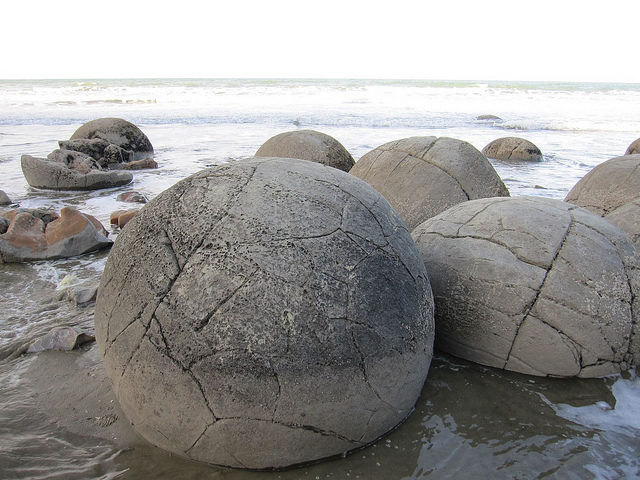
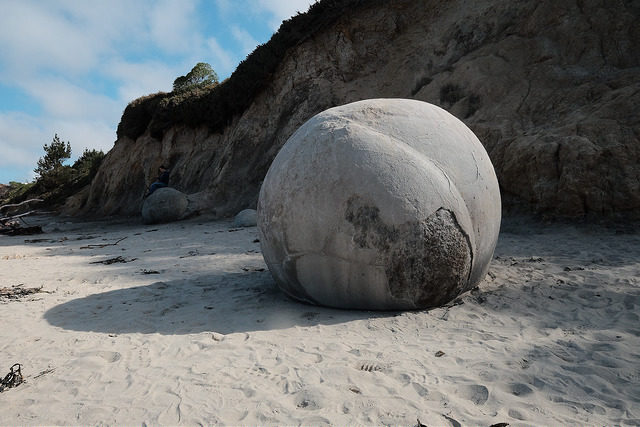
According to Maori legend, the origin of the boulders dates from the loss of the Arai-te-uru, one of the large sailing canoes that came from distant Hawaiki. They explained them as the remains of calabashes and kumara, like big melons and potatoes because of the soft interior.
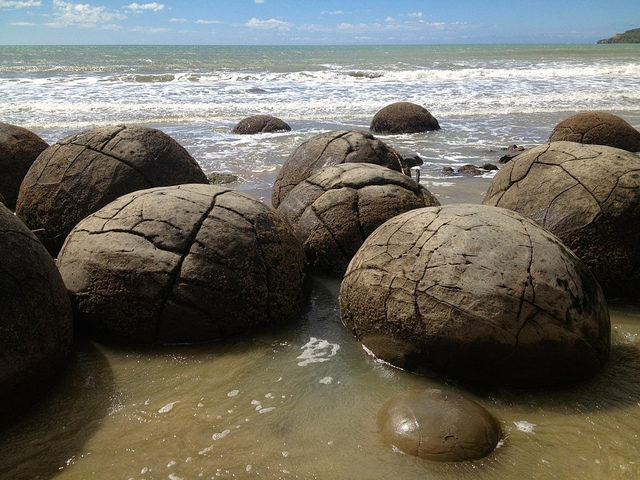
They look like some long abandoned game between giants or egg shells of sea-born dragons and some even say that they are alien eggs (apparently, the alien eggs are sent from outer space and have been washed up on the shore by the ocean).
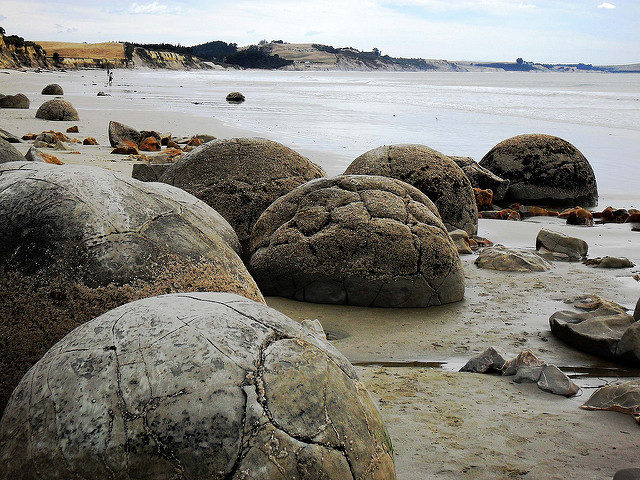
Their bizarre cracked shells, often perfectly spherical, remain largely unexplained and keeps them regarded as “geological mystery”. These otherworldly spheres of rock continue to attract visitors to this beach, who wants to catch a glimpse of these amazing works of nature.
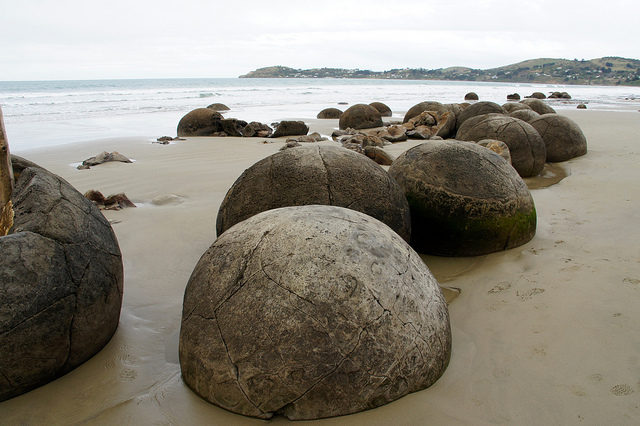
However, the Moeraki Boulders are not the only rocks of this size and shape. There are huge spherical boulders molded over millions of years on other coasts as well. Similar spherical boulders were discovered in Russia, Costa Rica and even in Bosnia.
